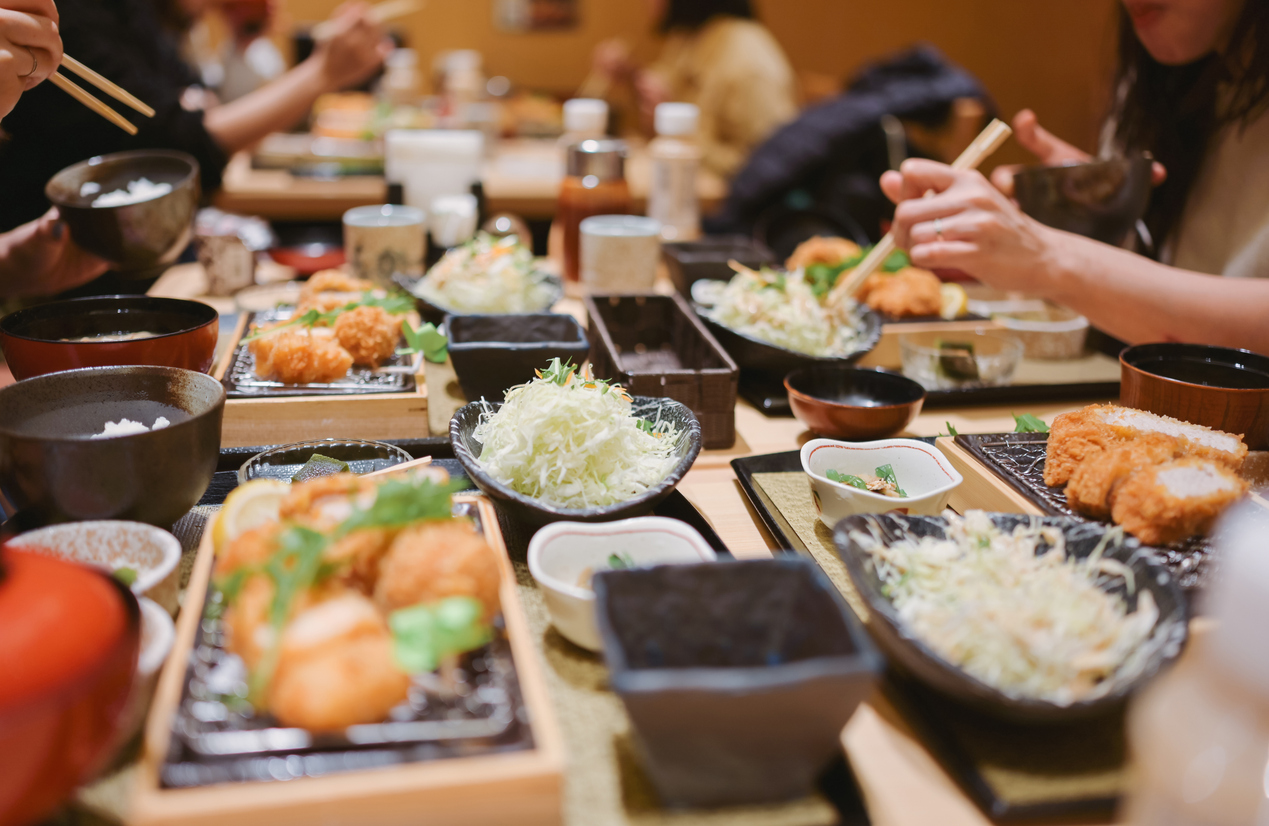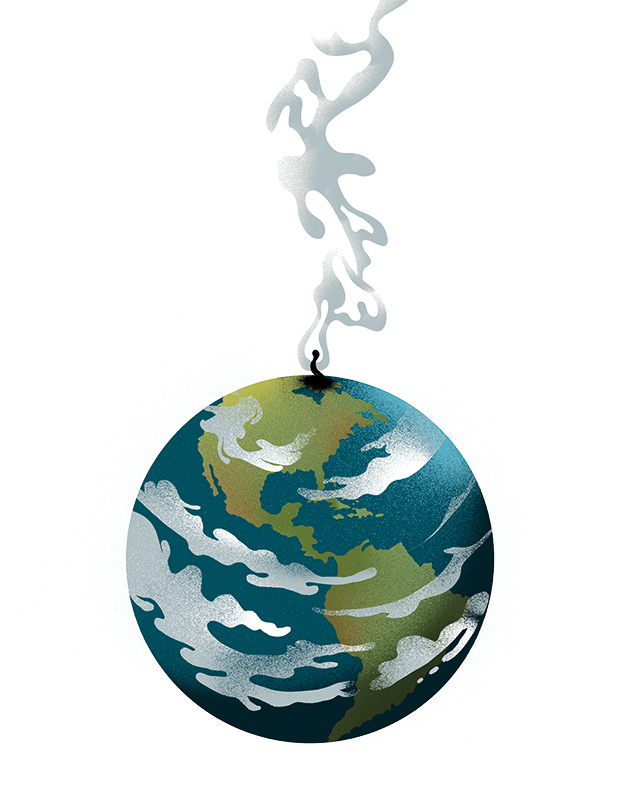It’s great having toilets with warm seats that shoot water up your bum until you need somewhere to throw up. After eating two kilos of raw, vengeful tuna, I was leaning over a hotel loo in Osaka and all I wanted was to rest my clammy forehead on a cold plastic seat.
Six hours earlier, I had watched a man carve up a metre-long bluefin tuna on Dotonbori Street. It appeared very much still alive, apart from the limp way its mouth fell open when the fishmonger turned it upright on its belly. ‘Very, very fresh!’ he hollered, whacking it to bits. ‘Very, very, very delicious!’ I took his word, like the tourist sucker I am, and ate an entire bowl filled with chunks of chutoro and kamatoro, and 13 more pieces of nigiri.
My inability to stomach the basic, simplest, most elegant Japanese food filled me with shame. Anthony Bourdain (passé as it’s become to idolise him, I still do) wanted sushi for his last meal, to get shot ‘KGB-style’ at the hinoki wood counter of Sukiyabashi Jiro in Toyko. Was I some total philistine? Was it my gut that couldn’t handle foreign bacteria, or my prejudiced tastes that couldn’t handle foreign cuisine? I almost felt it was the latter: my American tastes, whose cultural horizons only go as far as instant ramen and Philadelphia rolls, were to blame.
There’s a word used to describe the approach to food in Osaka: ‘kuidaore’. Literally, it means eating your way to financial ruin, which is difficult to do on a press trip – I would sooner have gorged myself into a coma than succeeded at bankrupting Qatar Airways. The more catchy translation is ‘eat til you drop’. I made it through the easy stuff no problem: takoyaki (octopus dumplings) done up ‘western style’ slathered in cheese, truffle salt and a Worcestershire-based sauce; okonomiyaki (savoury pancakes drizzled in mayonnaise); yakisoba (stir-fried noodles, again with that Worcestersire stuff); conveyor belt sushi (the contraption was invented in Osaka in the fifties but has since become ubiquitous in shopping malls). But eventually, yes, I dropped.
I’d spent the night before I got food poisoning sleeping on a tatami mat in a Buddhist temple, so perhaps I was undergoing a sort of purgation of body and spirit. Koyasan, in the mountains outside of Osaka, was chosen by the still-revered, massively influential monk and scholar Kukai as the holy site where he would establish Shingon Buddhism, or esoteric Buddhism, in 816. Here, you can eat and sleep like a poor old monk for about £160 a night.
Shojin ryori, the monks’ cuisine, adheres to strict Buddhist principles of simplicity and non-violence. No meat, no spice, nothing that excites the senses. But it’s a pleasure to look at, if not to eat. We were served a constellation of little bowls of lotus root, shiso leaves, colourful pickles and milky smooth goma dofu (which, like its name suggests, is not quite tofu but a sesame-based dupe).
Our tour guide in Koyasan explained to us that the monks don’t actually eat like this. In fact, most are married and have side hustles. Esoteric Buddhism, from what I understood, considers the Buddha to exist within every human being, so there’s nothing wrong with our worldly desires, as they are also the Buddha’s desires. We all nodded in admiration at this very progressive take on morality, relieved that we’d finally found the one organised religion that wasn’t run by repressed sexual perverts. ‘But what if you desire sex with a child?’ someone in our press group asked. Thank God, a proper journalist.
Was it my gut that couldn’t handle foreign bacteria, or my prejudiced tastes that couldn’t handle foreign cuisine?
The guide answered that one must take into account their duty to the betterment of society when acting on desires, which is bad news for paedophiles but a great excuse for corporates. The cemetery at Koyasan, where Kukai is said to still be alive meditating inside his mausoleum, was full of monuments to businesses, many of which list the names of their dead employees. A gaudy model of the Apollo 11 rocket was erected by ShinMaywa, a Japanese aircraft company which had nothing to do with the moon landing. Another monument had a letter slot carved out of its lacquered stone. They say that if you leave a business card with your phone number on it, good fortune may literally call upon you.
Back in Osaka, our final meal was at a kappo restaurant, Kigawa, on a narrow backstreet a few blocks from Dotonbori. Kappo is an old-school style of fine dining, where customers sit at a counter watching the chef and his assistants prepare ten courses of a set menu under a dim, golden light. I ate in a haze of low-grade feverishness and pure awe. I won’t pretend I’d been through a brush with death, but the Kumamoto wagyu on a yam dumpling made me feel lucky to be alive.
I did nothing on the 18-hour flight home but sleep and watch Oppenheimer. This was possibly an inappropriate way to depart from Japan, but I chose it for the romance plots and hadn’t given much thought to the nukes. Sadly, Qsuites, which otherwise answers to every imaginable need, had censored and cut out Florence Pugh’s nude scenes. What a shame – the Buddha would not have minded.
Qatar Airways flights to Osaka depart from London Heathrow with a layover in Doha. Economy returns from £919 per person, Qsuites business returns from £3,666 per person. Nights at Rengejo-in temple in Koyasan can be booked here.








Comments